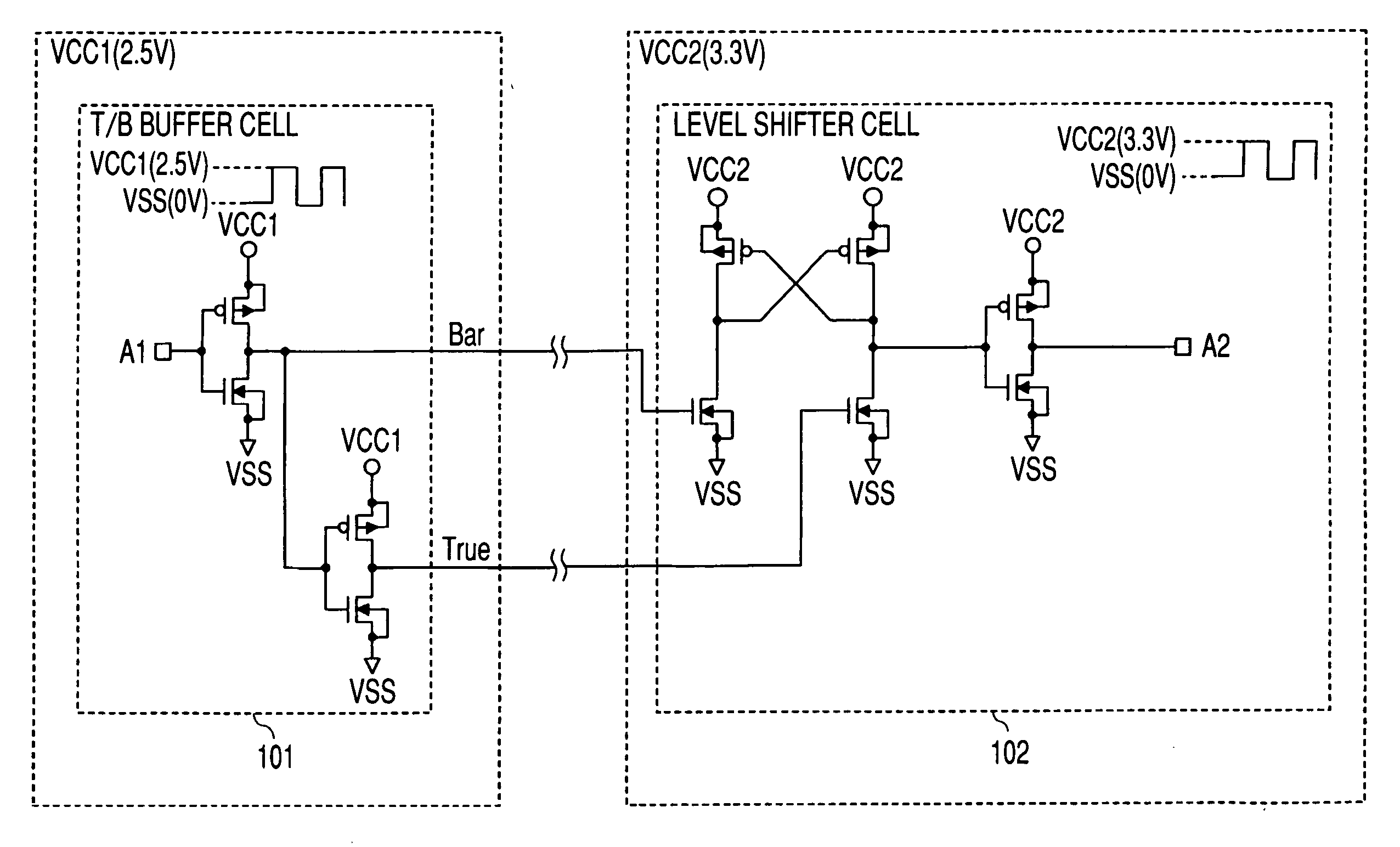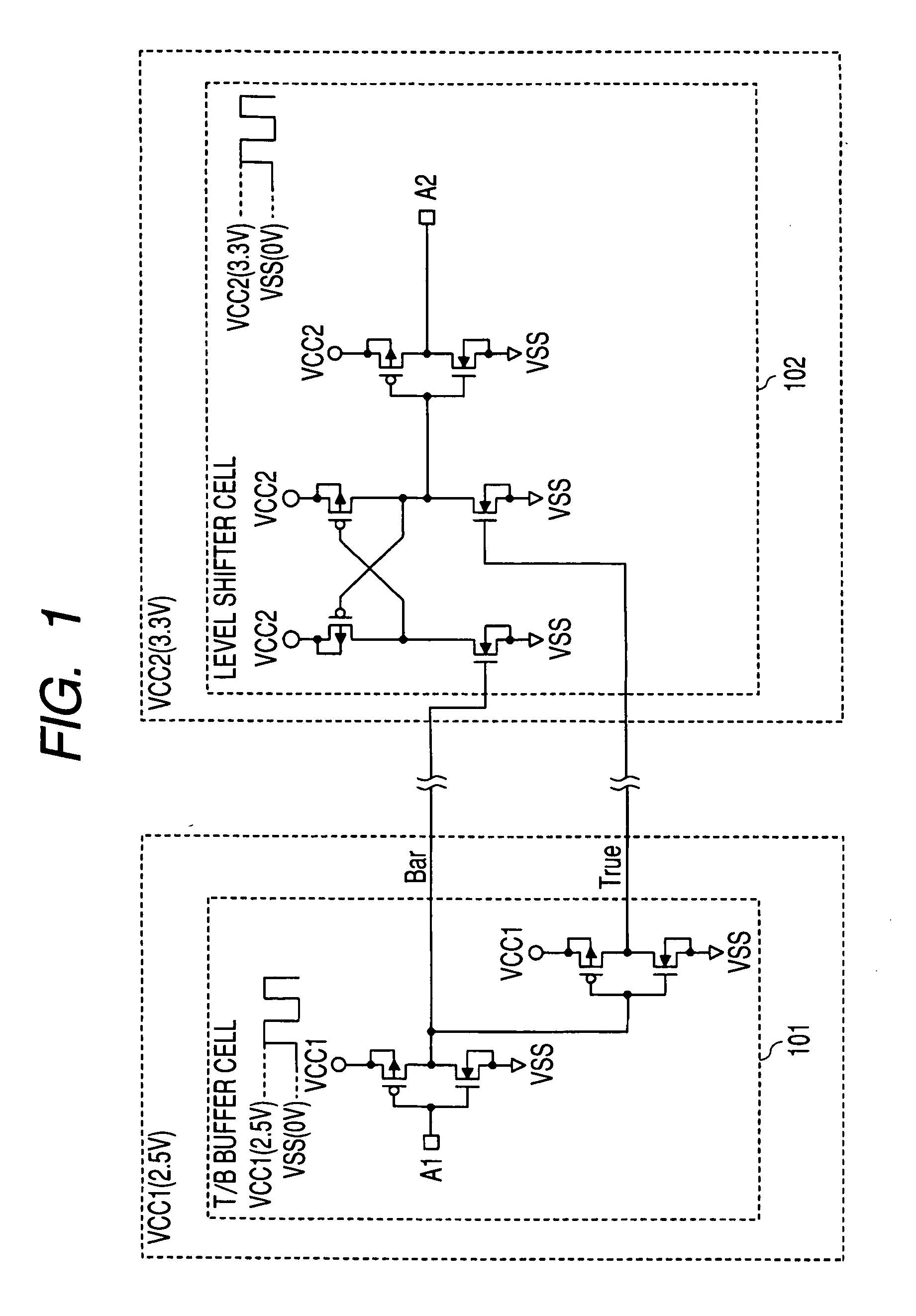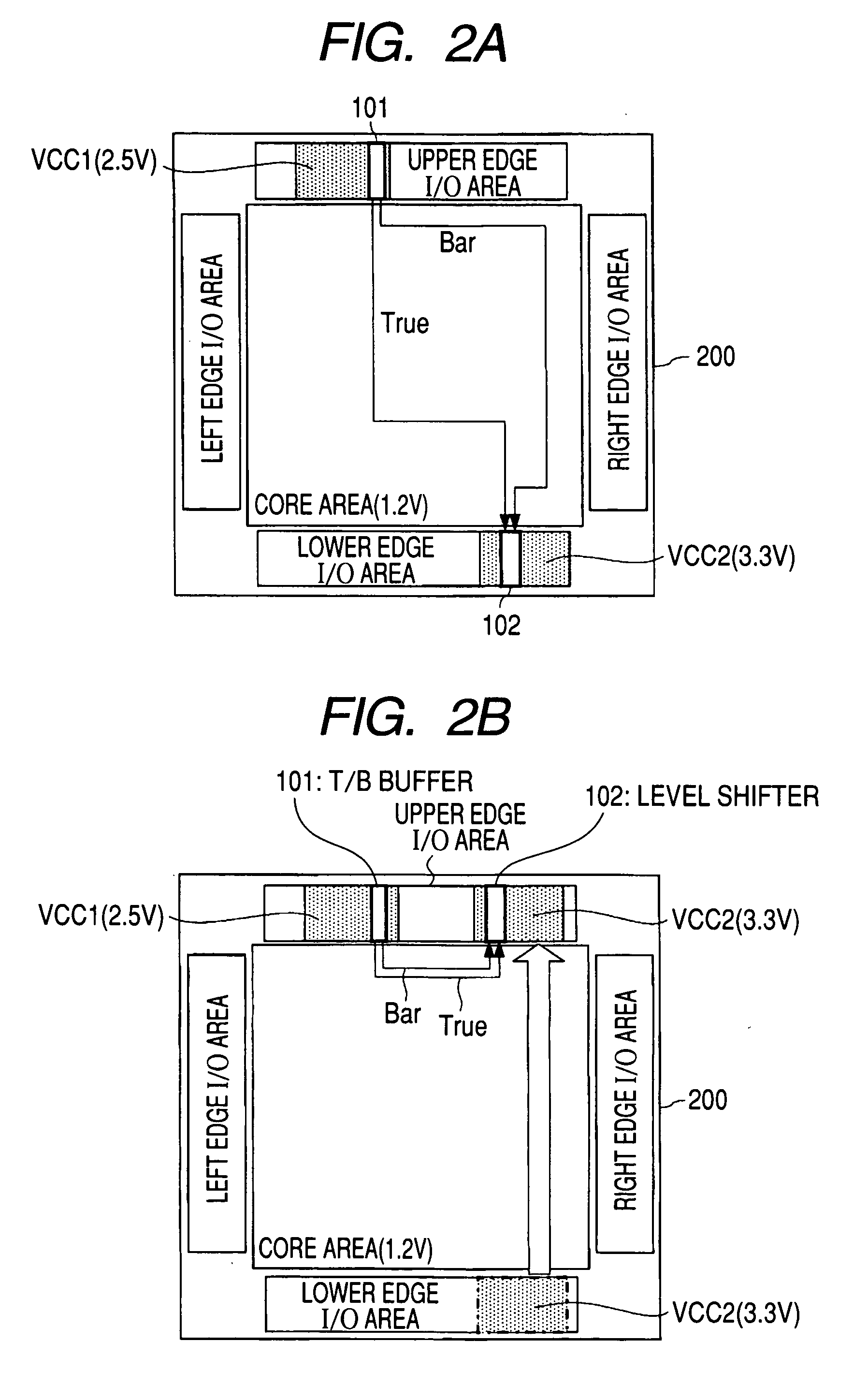Semiconductor device
a technology of a semiconductor and a shielding circuit, which is applied in the direction of superconductor devices, semiconductor/solid-state device details, line-transmission details, etc., can solve the problem of level shifter circuits that are connected to true and bar signals that are not working properly, and achieve the effect of preventing circuits from malfunctioning
- Summary
- Abstract
- Description
- Claims
- Application Information
AI Technical Summary
Benefits of technology
Problems solved by technology
Method used
Image
Examples
first embodiment
[0034]FIGS. 3(a) to 3(c) show the arrangement of signal wires and shield wires in an I / O cell in a semiconductor device according to the first embodiment of the present invention; FIG. 4 schematically shows signal wires and shield wires with I / O cells in place; FIG. 5 schematically shows long-distance wiring with first layer metal (metal 1) shield wires; FIGS. 6(a) and 6(b) show the arrangement of signal wires and shield wires in an I / O cell and surrounding power wires; and FIG. 7 schematically shows surrounding power wires over the first layer metal (metal 1) shield wires.
[0035]First, the arrangement of shield wires in an I / O cell 301 in the first embodiment will be explained referring to FIGS. 3(a) to 3(c). FIG. 3(a) is a top view of the I / O cell. As shown in FIG. 3(a), the I / O cell 301 has a bonding pad 302, a true signal wire 303, shield wires for it, 304a, 304b and a bar signal wire 305 and shield wires for it, 306a, 306b. The true signal and bar signal (inverted signal of the ...
second embodiment
[0050]FIGS. 8(a) to 8(c) show the arrangement of signal wires and shield wires in an I / O cell of a semiconductor device according to a second embodiment of the present invention.
[0051]While in the first embodiment a pair of two wires, a true signal wire and a bar signal wire, are formed parallel to each other in the first layer metal, the wiring structure in the second embodiment is different. In the second embodiment, the signal wires are formed in the first layer metal (metal 1) and the third layer metal (metal 3). In other words, the second embodiment employs a multilayered wiring structure in which true and bar signal wires and shield wires are vertically stacked.
[0052]The arrangement of shield wires in an I / O cell 301a in the second embodiment will be explained below referring to FIGS. 8(a) to 8(c). FIG. 8(a) is a top view of an I / O cell. As shown in FIG. 8(a), an I / O cell 301a has a bonding pad 302a, a true signal wire 303, shield wires for it, 304a, 304b, and, under these wir...
PUM
 Login to View More
Login to View More Abstract
Description
Claims
Application Information
 Login to View More
Login to View More - R&D
- Intellectual Property
- Life Sciences
- Materials
- Tech Scout
- Unparalleled Data Quality
- Higher Quality Content
- 60% Fewer Hallucinations
Browse by: Latest US Patents, China's latest patents, Technical Efficacy Thesaurus, Application Domain, Technology Topic, Popular Technical Reports.
© 2025 PatSnap. All rights reserved.Legal|Privacy policy|Modern Slavery Act Transparency Statement|Sitemap|About US| Contact US: help@patsnap.com



